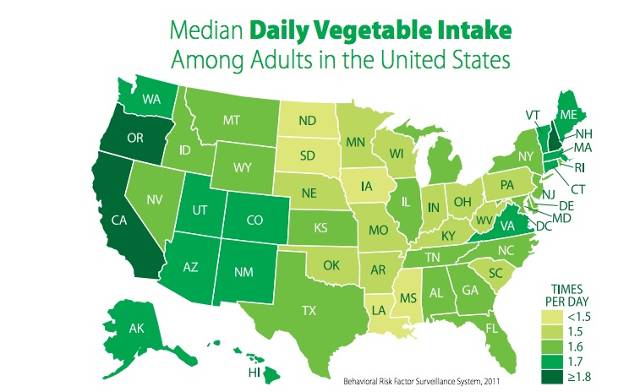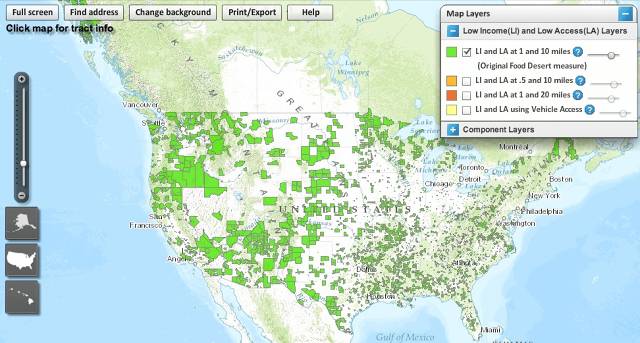Mapping Where Americans Eat The Most Fruits And Vegetables
An apple a day… but only in some states.
Nutrition fads come and go, but fruits and vegetables are always trendy--they’re extremely good for us, no question about it. It’s not always easy for people to get access to fresh produce, though, especially if they live in food deserts (places where fresh food is hard to find). States with a higher density of farmers markets; acceptance of food assistance programs at the aforementioned farmers markets; and other retailers (like supermarkets and corner stores) that have lots of produce are likely to have residents that eat more fruits and vegetables every day.
This map, provided in the CDC’s State Indicator Report on Fruits and Vegetables, reveals which states are eating enough produce, and which are falling behind.

There are some obvious trends here. The West Coast generally eats the most produce every day; the East Coast eats a lot too. The Midwest and the South lag behind. The report points out that the map looks the way it does because of access to fruits and vegetables (or lack of it).
A number of states with the highest consumption of fruits and vegetables have more environmental supports.For example, adults in Oregon and California eat more vegetables than adults in other states. They also are among the highest in fruit consumption. Oregon and California are also above the national score on access to a healthier food retailer, farmers market density, and farmers market acceptance of nutrition assistance program benefits.
One thing worth mentioning: the report doesn’t define what a serving of fruit or vegetables looks like. Does the limp little tomato slice in a McDonald’s burger count as "vegetable intake"? How does that compare to a green juice packed with cucumber, carrot, and beets? That’s all presumably up for interpretation.
Surprisingly, this map doesn’t exactly match up to the USDA’s food desert map, which looks at low income (LI) and low access (LA) spots across the U.S, where people live at least one mile in urban locations or 10 miles in rural locations from the nearest supermarket.

It’s not just about proximity to groceries--as we mentioned, support (like farmers market acceptance of food stamps) is key
No comments:
Post a Comment